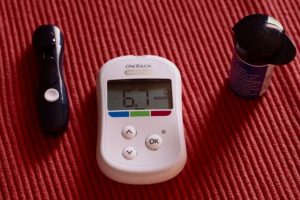What Is Type 2 Diabetes?
Today, Longevity Exercise Physiology Drummoyne, Edgecliff, Marrickville, Bella Vista, Randwick, Pymble, and Balmain look at one of the most prevalent chronic conditions in Australia: type 2 diabetes.
What is Type 2 Diabetes?
Type 2 Diabetes (T2D) is a metabolic condition that arises when your blood glucose (sugar) levels are too high. Blood glucose levels is mainly influenced by the foods that you eat and is our primary source of energy. The body produces insulin from the pancreas to transport glucose into our body’s cells (e.g. muscle cells) so that it can be used for energy. In a person living with T2D, the body’s cells do not respond effectively to insulin, leading to high levels of glucose remaining the blood stream. Generally, a consistent blood glucose level of >7.0mmol/L when fasting is classified as having high blood sugar levels. Over time, this plays a host of a variety of other health conditions and comorbidities such as cardiovascular disease, stroke, nerve, eye, foot and kidney damage. People with T2D also frequently require treatment for high cholesterol and blood pressure levels.
What are the stats saying?
According to the Heart & Diabetes Institute, around 1 million Australians have been diagnosed with type 2 diabetes, with their total annual costs being up to $6 billion (includes all healthcare costs, carers and government subsidies). The prevalence of T2D rises with age and is higher in men compared to women. Despite reaching epidemic levels globally, type 2 diabetes continues to be under reported, potentially because people are not often aware that they have it until complications arise.
What are the symptoms?
As mentioned, people with T2D do not experience any noticeable symptoms at first. However, once they do appear, they can include increased thirst, frequent urination, fatigue, irritability, extreme hunger, blurred vision, slow-healing sores and frequent infections. Over time, T2D can lead to further complications as previously mentioned, which can cause other symptoms to appear.

How can it be prevented or managed?
It has been shown that early intervention with intensive lifestyle changes in people with pre-diabetes (people at risk of developing T2D) can reduce the risk of developing diabetes by almost 60% in just 3 years. Early intervention involves a combination of exercise, education and a healthy diet. For those already with T2D, the same intervention methods are used to stop or manage development of diabetic complications; medication may also be introduced during this stage as well, although they are not without side effects. Obesity is also major contributor to type 2 diabetes with estimates showing that eliminating obesity from the population can potentially reduce the incidence of type 2 diabetes by over 40%. In fact, it is expected that an average weight loss of 2kg reduces the risk of developing T2D by a whopping 30%.
How is it diagnosed?
Type 2 Diabetes is typically diagnosed through blood tests. It is important for diabetes to diagnosed early, as this allows for it to be better controlled and more serious complications can be avoided.
If this chronic condition is relevant to you or someone you know, speak to one of our Exercise Physiologists on 1300 964 002 to get guidance on a treatment plan today.

Written by Jackie Cheung

